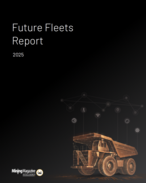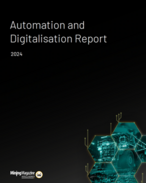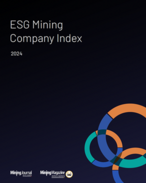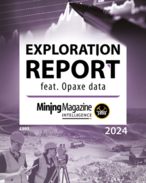This article is 17 years old. Images might not display.
88ÓéŔÖłÇ
While the designers are still to submit final plans for the product to meet the new outlined regulations of the MINER Act, they said the ZigBee-based tracking, monitoring and emergency messaging system had attracted interest from more than 60 coal mines.
MineTracer meeting the MINER Act
Helicomm sales director Ken Hill spoke last week to ILN about the system, the challenges the company faced in design, and trends it is observing in the sector.
Because MineTracer was developed specifically to meet the guidelines of the MINER Act, Hill said the company feels it is in the best position from a compliance perspective, "rather than using commercial off-the-shelf components and attempting to make them work in the application."
The company's design team exploited the wireless technology's existing features, such as ultra-low power, low data rate and a self-healing ad hoc mesh networking, in the building of its own system.
"Rather than attempt to overcome the challenges by overpowering the obstacles [that is, increased RF power to propagate signals through solid rock], we deployed many repeating modules to communicate from within the mine back to the office and back via a low-power bucket brigade architecture," said Hill.
"The multi-path, multi-route capability ensures there is no single point of failure for the system and facilitates the ability to run for days on the inherent battery backup once power is shut down in the mine."
The device operates in real time through the use of low-powered wireless access points (WAPs). In the event of an incident, the exact location of miners can be given.
"Following shutdown of power, we can continue to provide the same data from all sections that have not been directly damaged by the incident," Hill said.
"This will limit the variables dramatically as rescue teams formulate their plans."
Signal strength can be easily verified and replaced if needed, and the system's coloured strobes can help workers to easily escape, even in sub-par conditions. Also, no matter the level of traffic in an emergency, all text messages sent will be relayed to their intended party.
Customers seeking wireless systems such as MineTracer, Hill said, are looking for devices that work for more than just emergency situations. MineTracer fits that bill, as once installed mines can include additional features that will heighten the return on investment for the unit, he said.
"In addition to wireless two-way communications and tracking, sensor data can be transmitted over the network," Hill said.
"By interfacing to various sensors, environmental conditions can be precisely monitored over the same system … situational awareness is afforded to those that want to take advantage of the system."
A level of uncertainty, Hill said, is possibly one of the largest challenges Helicomm has had with the MINER Act's regulations.
"The MINER Act was written with a view to future technologies, so specifics are not enumerated," he said.
"What was written into law was more results oriented than performance specific. Uncertainty regarding what will be considered an acceptable solution is impeding implementation of current solutions."
As there is still nothing concrete to reflect that state and federal laws will be parallel in the end, Hill said that many operators are hesitant to make a move for a technology because of cost, when they do not know if the technology will be approved in the long term.
"While congress set aside at least $US10 million to fund development of 'new' technologies, little of those funds have found their way to the innovators that have developed product being evaluated in West Virginia today," Hill said.
"While it would be nice to share in those revenues, we have been committed to meet deadlines of West Virginia and other progressive states that are accelerating the implementation of the provisions of the MINER Act.
"Delays in deployment certainly strain the private investment and threaten to curtail further development and improvements."
In the meantime, its research and development wheels continue to move.
"We are continuing to work to improve the overall performance and looking to develop lower cost components to aid in expansion of the deployments, [and] are also working with other suppliers to provide them with the ability to couple onto our infrastructure increasing the value of the system to operators," Hill concluded.












